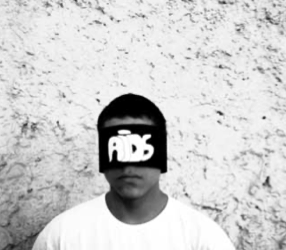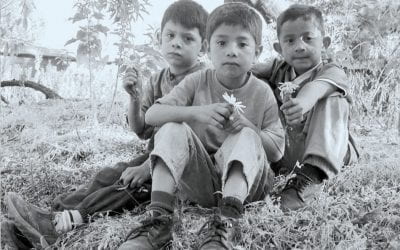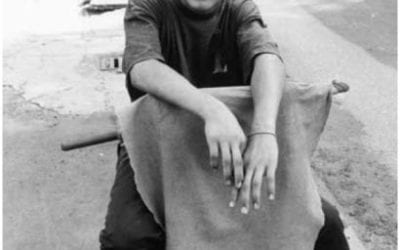Two Wixaritari Communities: One Language and One Culture
Between 1996 and 2000, over US$1.2 billion were spent in nutrition and food programs in Peru. The result was an embarrassing 1 percentage point decrease in the level of chronic malnourishment among children under 5 years old.
In 2000, Save the Children Sweden (SCS) asked us to find children in the Peruvian public budget. At the end of a decade in which, according to the government, children would come first, this seemed as a straight forward task. However, after months of searching through endless budget volumes and institutional memories children were no where to be found. Budget structures were not consistent across time and the information provided was not disaggregated enough to determine how much was being invested and spent directly on children. Added to this information gap, it was obvious from household survey data that child welfare had not significantly increased during the Fujimori decade; even though the number of institutions and programs specifically focused on them had multiplied. How was the government spending our already limited resources?
To answer this question we undertook a greater challenge. To study public sector expenditure on children during the 1990s while evaluating the sector’s response to 4 key areas of child welfare: health and sanitation, education, nutrition and justice and well-being. We further explored the state of child welfare in Peru by exploring the livelihoods of some of the most vulnerable children: street children, working children and teenage mothers (other studies at CIUP focused on children victims of domestic violence and children with disabilities).
Again supported by SCS, this study became an effort to assist local governments and public institutions to develop a monitoring and evaluation methodology to identify and target children through efficient, effective, equitable and transparent initiatives. In this short article we will briefly discuss the main findings of our study and highlight the need to mainstream this methodology as a means of addressing specific child problems through direct policy interventions.
KEY FINDINGS
In first place, our study showed that no more than 25% of the public budget was focalized on children when it should have been at least 45%. It revealed that this meager proportion was pro-cyclical to GDP and total public budget trends. This is extremely worrisome because it means that precisely when the economic situation is worst, the poor are the first to suffer from budget constraints. Consequently, focalized social public spending reached its peak by the middle of the 1990s and collapsed after the Asian Crisis and the effects of the El Nino Phenomenon.
Secondly, focalized social expenditure did not reach to extreme poor nor the most socially and, particularly, geographically excluded. As a consequence, the situation of children in the rural Sierra and Selva has not improved and they remain entirely unprotected. Thirdly, children’s invisibility in the public budget is part of an opaque public policy culture that does not allow nor encourage monitoring and evaluation of policies and results. Hence social expenditure suffers from high levels of leakage and unnecessary overlapping of programs. Finally, the State has not yet faced the drama of children living in high risk conditions. To do so, it must look towards organized civil society that has, in Peru, developed important and innovative local initiatives in favor of children.
HEALTH AND SANITATION
The achievements in health levels and access to health services in the 1990s are relatively significant. In 1996, the State only had 1.930 pediatric and mother-child specialists for 3´841,599 children. In addition, while infant mortality rates dropped from 57.2 per 1000 children born alive in 1990 to 34 in 2000, the gap between rural and urban remained high at about 26 children per every 1000 born alive in the rural areas with respect to urban. This inequality is more obvious when total personal health expenditure is analyzed according to income deciles. In 2000, the richest 10% spent 30% of the total health expenditure while the bottom 40% did not even spent 20%. The Toledo government has tried to change this inequality by setting up a special Health Insurance for the poorest. Unfortunately, the mismanagement of this governmental health program has a leakage over the 50% and has generated a US$40million financial problem for the health sector by 2003.
Under Mr. Toledo, reforms in the health sector have been half-hearted. A highly needed Integral Health system was created but it lacks the capacity to reach the most vulnerable and poor. And still no specialized public program do deal with children with HIV/AIDS exists; only pregnant women and recent mothers receive milk supplements and ARV treatment. This is significant because in Peru, 77.8% of children under 15 years old who are infected with the virus are between 0 and 4 years old.
NUTRITION
In addition to the shocking figure presented at the start of this article it is important to note that by the year 2000, public food and nutrition initiatives showed a level of juxtaposition of 36%: 10 programs and 7 projects reached the same infant population, 6 programs and projects support the same school population, 3 programs care for the same pregnant and breastfeeding women; 2 projects assisting the elderly; and 10 programs and 2 projects reaching the extreme poor in general. Besides juxtaposition, the main reasons for the failure to address malnutrition in the 1990s in Peru rest on the high levels of filtration and the poor quality of the rations.
The massive budgets (US$300 million per year) destined to this sector, considering that it used voluntary labour from women and neighbour associations as well as the network of public health and education workers, is explained by the role these programs and projects played in the political machinery of the Fujimori Regime. The mobilization of voters among the poor was orchestrated with the significant contribution of these associations lured by the control of significant rent seeking activities (money and food transfers from the central and local governments) or threatened with the loss of basic food rations. It is not surprising, then that expenditure in food and nutrition programs remained high after 1997 and considerably grew towards 2000 to coincide with general elections, even though the rest of the public social sector budget was constrained. However the fiscal constraints have set up dramatic cuts of food programs budgets under Mr. Toledo’s government: 12% less public resources for poor children.
Mr. Toledo’s government has shown conflicting signs of real change. While cutting-down in spending, nutritional programs have been transferred to PRONAA, thus reducing risk of juxtaposition, and are in the process of decentralization. However, under political pressure to speed up the process, no guarantees have been given towards a better management of the funds and implementation of the programs: leakage and quality are still at risk.
EDUCATION
What is most significant about the education sector is that during the 1990s a large proportion of the resources were destined to infrastructure. The institutions in charge of educational infrastructure went from a budget of about U$32,000 in 1990 to US$112 million in 1994 under the obligation to reach the 1 school per day goal campaign promise of former president Fujimori. This trend remained after 1995 but more focus was given to the development of the school curricula. Nonetheless, successes were hard to find. The urban rural domain remained extremely high by the end of the decade: while Lima’s children showed an average 0.99 years behind in school, the rural selva had 2.06 years. And children raised in households where the mother lacks education show a delay of approximately 2 years in contrast to an average 0.15 years for those whose mother have 18 years of education. Similarly, the situation of rural girls lacked the political interest that the subject deserved and their situation was considerably worse than that of boys.
Besides physical access to a school building, a significant element of education is its quality. The increase in schooling facilities did not breed quality and were nor entirely successful in significantly achieving quantity. Recently the last international evaluation developed by UNESCO-PISA (Programme for International Student Assessment) in 2002 showed an embarrassing situation. In both kind of evaluation -logical-mathematics and reading & writings tests- Peru reached the last position in world ranking.
Economic stress on the household and the significant increase of the opportunity cost of education, maybe due in part to a thriving informal sector, kept up considerable levels of school dropout rates; in 1996, 23.2% of all adolescents living in extreme poverty between the ages of 12 and 17 did not attend school (26.1% for girls of the same group). The change of government has not meant a change of the trend, even worse. The dropout numbers in 2001 have increased 50% in comparison with the 1995 year.
JUSTICE AND WELL-BEING
It is not often that it is possible to say that justice is blind in Peru. However, this is the sorry case for children. Very little has been achieved to deal with children that must face the law; whether as victims or aggressors. Child labor in Peru is still a problem that is addressed timidly and that needs to be tackled across other sectors. Child participation in artisanal and small scale mining, for instance is challenged by various civil society organizations but until the government recognizes the sector and properly includes it within the organizational structure of the Ministry of Energy and Mines, little can be expected in terms of long term and stable changes. Cases of children in the Armed Forces are not rare and domestic violence remains highly unreported (70%), particularly in the rural areas.
Child well-being during the 1990s was symposiums with sport. As with schools and feeding programs, the Fujimori regime built high profile sporting facilities mostly in newly upgraded squatter settlements in urban areas. Mr. Toledo’s government thought that putting computers in every school would compete to Mr. Fujimori, however, the Huscaran Program failed: The schools need to have electricity and telephone access and well-trained teachers before anything else.
CHILDREN IN VULNERABLE SITUATIONS
When it came to sitting down and talking, face to face, with children living in the most vulnerable situations in Peru, we encountered the true face of this invisibility. Street children are not, as many would think, those waiting on street corners begging or selling candies to motorists. Street children live under bridges, spend their days running away from an abusive police force and sinking deeper into a drugs and violence vicious cycle. Our attention was drawn to them, even though they constitute a proportionally small group in the country because they highlight the true structural characteristics of extreme child poverty: they do not belong. Street children have severed all connections with their family, school and friends. Successful interventions have recognised this and reach them by slowly rebuilding their ties with these social institutions.
According to a survey organized in Lima by the Asociación por la defensa de las Minorías (ADM), an NGO, most of the street-children show a critical situation of moral and material vulnerability. For instance, 60% are thieves and 5% has become prostitutes. Furthermore, 53% of the street-children has health chronic problems and 6% showed a diarrheic stage.
Teenage mothers present another important challenge to be addressed. They provide an intergenerational transmission of poverty passing on their own social, economic and bio-physical disadvantages; the chances of a newly born having anaemia increase considerable if the mother suffers from it and poor obstetric conditions can result in disabling infections for the child. Furthermore, they teenage pregnancies come in hand with child violence, child molestation and sexually transmitted diseases; of which HIV/AIDS deserves much closer attention.
In the first years of the New Millennium, children still appear to come last. What is most dramatic about Mr. Toledo’s administration is its lack of recognition of the urgency of the situation. Since 2001 a series of Ministerial changes (the most recent Minister for Women and social Development had to resign within a day of being appointed) has created a damaging instability in the sector. The National Plan for Children and Adolescents was approved under one minister, undone by the next and it is now being re-launched with radical changes. What is even worse, the plan is unknown for most State institutions.
In essence, the reform has not gone beyond changes in the people in government. The failed structures of Mr. Fujimori remain unchanged.
A LOOK INTO THE FUTURE
The key to child poverty reduction rests on what Professor Robert Chambers describes as a process of reversals. The study of child policies in Peru since the 1990 and current world wide trends suggest that children still remain too far from the policies. Interventions are often indirect, reaching children through the household or other institutions such as schools. This responds to a failure to properly understand and measure child poverty in terms of multiple depravations and, as Professor Peter Townsend argues, outside the household black-box. Hence an urgent step to take is the development of strong scientific methodologies to measure child poverty and adjust policies accordingly to target children directly. These methods have to transform, reverse, the way I which we face poverty and carryout policies. We have already taken this step in the development of information systems but it still waits mainstreaming. SCS has supported the building up of a monitoring methodology which can help to see if the children’s rights are being respected. This work was carried out in municipal governments (Lima and San Borja) and two central government institutions (INFES and FONCODES). Further work continues in other local governments in other more excluded provinces.
At present, children remain unprotected by the State, even when it has ratified the Convention on the Rights of Children (2001). A closer monitoring of the State’s responsibilities in this matter is on call for civil society, particularly human rights organisations. However, this task will require the participation of other actors who must recognise that only investing in children will about the necessary foundations for sustainable growth. The challenge is to draw attention away from short term gains for a few and focus on the long term benefits for all.
Some key issues to look into in the future are HIV/AIDS and forms of direct response to the needs of children. HIV/AIDS and other sexually transmitted diseased require an immediate attention. Latin America is well within time of avoiding a pandemic that is reducing life expectancy in many African countries and undermining their already weak States.
Cash transfers have been tried in the region, for instance in Brazil and Mexico. Their effectiveness is still undetermined but instead of caution this should encourage research and innovation in this field. Direct child policies would certainly involve some kind of direct transfers and should aim towards reducing inequalities according to gender, geographical domain, social status and economic situation, by addressing social as well as economic needs.
Winter 2004, Volume III, Number 2
Enrique Vasquez is a Professor of Economics at the Universidad del Pacífico in Peru and a researcher at the CIUP Research Center. He specializes in antipoverty programs and policies.
Enrique Mendizabal is a research associate at the Universidad del Pacífico. He was co-author of a study on the Peruvian government’s policies towards children between 1990-2000.
Related Articles
Where the Patient Still Thinks…
Like a row of dolls, they sit in the clinic waiting room—a dozen or so 14- and 15-year-old girls—all dressed nearly identically in navy blue school uniforms. With the television blaring real-life…
Through the Eyes of Children
Twenty years ago, I put my camera away, suspending a photographic career I’d happily pursued for nearly a decade. I did this after publishing photos I’d taken in a Salvadoran war zone in 1983…
Teen Life
Teen Life In Latin America and the CaribbeanWhat is life like for teens in Latin America and the Caribbean? That's a question I set out to answer when I was approached by Greenwood Press to co-edit Teen Life in Latin America and the Caribbean, with Kristen Sternberg...




